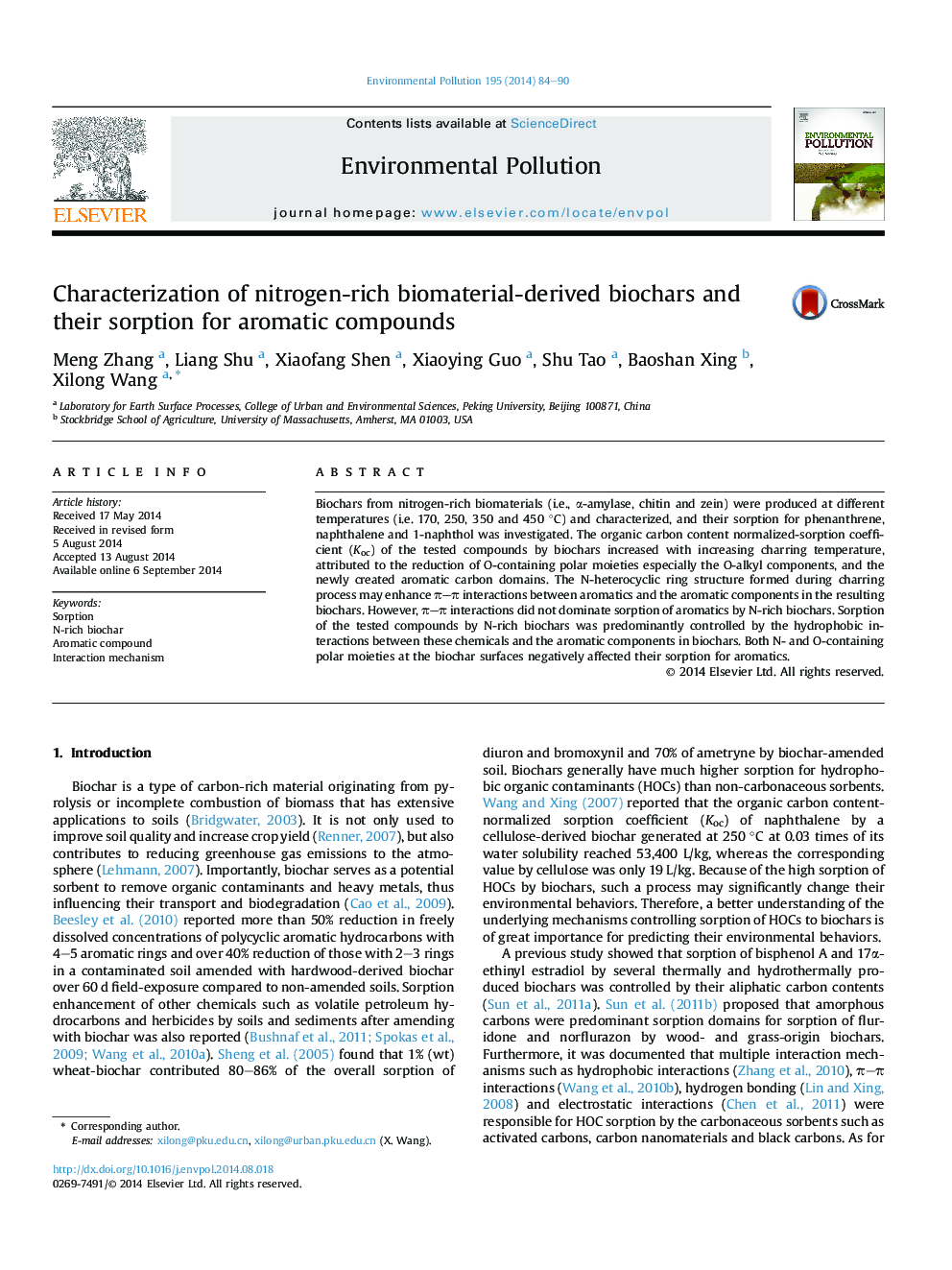| Article ID | Journal | Published Year | Pages | File Type |
|---|---|---|---|---|
| 4424384 | Environmental Pollution | 2014 | 7 Pages |
•Hydrophobic interactions between aromatic domains and aromatics dominate sorption.•Sorption of aromatics increases due to reduced O-alkyl polar functionalities.•N-heterocyclic ring formed during charring enhances sorption by π–π interactions.•Surface N- and O-containing polar functionalities of biochars inhibit the sorption.
Biochars from nitrogen-rich biomaterials (i.e., α-amylase, chitin and zein) were produced at different temperatures (i.e. 170, 250, 350 and 450 °C) and characterized, and their sorption for phenanthrene, naphthalene and 1-naphthol was investigated. The organic carbon content normalized-sorption coefficient (Koc) of the tested compounds by biochars increased with increasing charring temperature, attributed to the reduction of O-containing polar moieties especially the O-alkyl components, and the newly created aromatic carbon domains. The N-heterocyclic ring structure formed during charring process may enhance π–π interactions between aromatics and the aromatic components in the resulting biochars. However, π–π interactions did not dominate sorption of aromatics by N-rich biochars. Sorption of the tested compounds by N-rich biochars was predominantly controlled by the hydrophobic interactions between these chemicals and the aromatic components in biochars. Both N- and O-containing polar moieties at the biochar surfaces negatively affected their sorption for aromatics.
